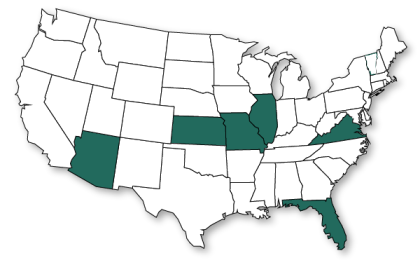 O’Connor Insurance was an early participant in the Green Power Community Challenge. Each month we post our carbon offset results from our solar energy array on our headquarters in Creve Coeur.
O’Connor Insurance was an early participant in the Green Power Community Challenge. Each month we post our carbon offset results from our solar energy array on our headquarters in Creve Coeur.
We are proud to be doing our part to make Creve Coeur one of the leading communities nationwide in deriving our power from renewable resources.
This month, our carbon offset is 1049 lbs. We have offset the equivalent of 12 trees.
Thanks to our solar vendor, Microgrid Solar, for the photo.
January Energy Tip – Get Money Back for Greening Your Home (From http://energy.gov)
Good news for you in 2016! Congress renewed the previously expired Residential Energy Efficiency Tax Credit and extended the Residential Renewable Energy Tax Credit for solar energy systems as part of the Consolidated Appropriations Act.
This means that any qualified efficiency updates you made in 2015 are eligible for credits when you file your taxes in the coming months. Plus, updates you make in 2016 will be eligible for credits when you file next year. And that solar energy or hot water project you were considering? You may be able to claim a tax credit for 30% of the cost to install one.
RESIDENTIAL ENERGY EFFICIENCY TAX CREDIT
Previously expired at the end of 2014, the efficiency tax credit has now been retroactively renewed from January 1, 2015, through December 31, 2016. If you made energy efficient home improvements last year (or plan to this year), use the list below to find out if your project could save you money.
The following products are eligible for tax credits:
- Building envelope improvements
- Insulation materials and systems
- Exterior doors and windows, including skylights
- Roofs’ pigmented roofs designed to reduce heat gain, and asphalt roofs with cooling granules
- Heating, cooling, and water heating equipment
- Advanced main air circulating fan
- Natural gas, propane, or oil furnace or hot water boiler
- Electric heat pump water heater
- Electric heat pump
- Central air conditioner
- Natural gas, propane, or oil water heater
- Biomass stoves
Each of these products has specific requirements to qualify for the tax credit; be sure to review the Residential Energy Efficiency Tax Credit requirements carefully before making a claim on your 2015 taxes or committing to a new purchase in 2016.
RESIDENTIAL RENEWABLE ENERGY TAX CREDIT
If you’re planning a renewable home energy project, such as installing a geothermal heat pump, small solar energy system, small wind energy system, or fuel cell property, those tax credits have also recently been modified.
The 30% tax credit for solar electric property and solar water heating property has been extended through 2019, with a gradual decrease in the tax credit amount in successive years through 2021.
There has been no change in the tax credits for fuel cell property, small wind energy property, and geothermal heat pumps. The tax credits are for 30% of qualified expenditures, with no maximum credit (except for fuel cells), and they expire at the end of 2016. Because implementing any of these technologies can entail a good deal of planning, you’d be wise to start now to ensure the systems are placed in service by the end of the year.
Please see the Residential Renewable Energy Tax Credit for more on the requirements for each.
LEARN MORE
Energy Saver has a number of resources to get you started in your planning:
- Planning for home renewable energy systems
- Small solar electric systems
- Small wind electric systems
- Geothermal heat pumps
- Solar water heaters
And because you’ll need to understand the ins-and-outs of the tax credits, head over to ENERGY STAR for its summary of the credits and comprehensive frequently asked questions about the tax credits. These resources are also helpful if you installed a system in 2015 and will be claiming the credit on your 2015 taxes.
Finally, check out one of our previous blog entries for more on the various incentives and financing options that you should explore when taking on a large home energy project.
Happy planning!


